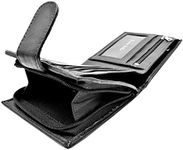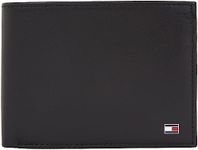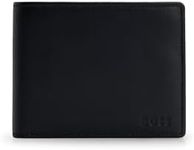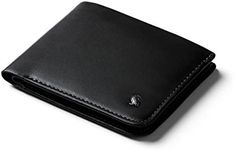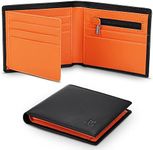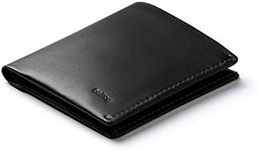Buying Guide for the Best Men's Wallets
Choosing the right men's wallet involves considering your personal style, daily needs, and the occasions you'll be using it for. A wallet is not just a functional item but also a fashion accessory that reflects your personality. To make an informed decision, you should look at various specifications and features that can affect the wallet's usability and appearance. Here are some key specs to consider when picking a men's wallet.MaterialThe material of a wallet is crucial as it affects durability, appearance, and feel. Common materials include leather, synthetic leather, fabric, and metal. Leather wallets are classic, durable, and age well, making them suitable for both casual and formal settings. Synthetic leather is a more affordable alternative but may not last as long. Fabric wallets are lightweight and often come in various colors and patterns, ideal for a casual look. Metal wallets offer a modern, sleek appearance and are highly durable. Choose a material that aligns with your style and how often you plan to use the wallet.
Size and CapacityThe size and capacity of a wallet determine how much it can hold and how comfortable it is to carry. Slim wallets are compact and fit easily in pockets, making them ideal for minimalists who carry only essential cards and cash. Bifold wallets offer a balance between capacity and size, with space for multiple cards and bills. Trifold wallets provide even more storage but can be bulkier. Consider what you typically carry daily—if you need to store many cards, IDs, and cash, a larger wallet might be necessary. For those who prefer a minimalist approach, a slim or bifold wallet would be more suitable.
Card SlotsCard slots are essential for organizing your credit cards, IDs, and other important cards. The number of card slots varies from wallet to wallet. If you have multiple cards, look for a wallet with ample slots to keep them organized and easily accessible. For those who carry only a few cards, a wallet with fewer slots will suffice and help maintain a slimmer profile. Think about your daily card usage and choose a wallet that can accommodate your needs without being overly bulky.
RFID ProtectionRFID (Radio Frequency Identification) protection is a feature that prevents unauthorized scanning of your credit cards and IDs, which can help protect against identity theft. Wallets with RFID protection have a special lining that blocks RFID signals. If you frequently travel or are concerned about security, opting for a wallet with RFID protection can provide peace of mind. For those who do not carry RFID-enabled cards or are less concerned about this risk, this feature may not be as critical.
Style and DesignThe style and design of a wallet reflect your personal taste and can complement your overall look. Wallets come in various styles, including classic, modern, sporty, and vintage. Consider the occasions you'll be using the wallet for—formal events may call for a sleek, classic design, while casual outings might be better suited to a more relaxed, colorful style. Additionally, think about the color and any additional features like money clips, coin pockets, or ID windows that might enhance the wallet's functionality and appearance.
Brand and CraftsmanshipThe brand and craftsmanship of a wallet can indicate its quality and longevity. Well-known brands often use high-quality materials and have a reputation for durability. Handcrafted wallets may offer superior attention to detail and unique designs. Researching brands and reading reviews can help you gauge the quality of a wallet. If you value longevity and are looking for a wallet that will age well, investing in a reputable brand with excellent craftsmanship is a wise choice. For those who prioritize style over longevity, a less expensive, trendy option might be more appealing.
